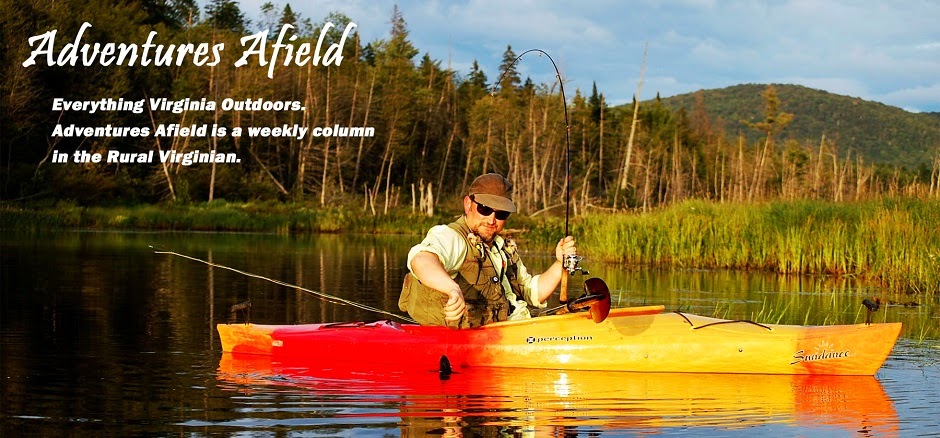Water and technology
don’t mix—you would think I would know that by now.
When I was younger, in
my last year of middle school, I acquired a hand-me-down flip phone—a Motorola
of sufficient capabilities. The gift was
supposedly meant to provide me a method of communicating when I was away from
home—to keep me safe.
However, I quickly learned
that phones are extremely dangerous. From
that moment on, the potential harm that loomed over my everyday operations was
magnificent, and I was required by special edict issued by my parents (bless
them) to carry the salvational device wherever I roamed, regardless of the
availability of cell service—especially if I was going fishing, as I did most
frequently, alone.
Now, much of my
childhood was spent wet-wading my home river—the Rivanna—even well outside of
the traditional wet-wading season. I had
not yet acquired waders, and my too-eager-to-care childhood-self pushed on
undeterred.
One sunny spring
morning, shortly after inheriting the phone, I made the bike ride and hike to
the riverbank and rigged up my fly rod. Keeping
my phone in my shorts pocket had become a habit, and I dared not remove it.
The river ran with the voluminous,
blue-green lifeblood of spring. The red
maples were blooming; samaras twirled in the breeze. Dogwoods and redbuds lit up the
understory. The smallmouth were
pre-spawn, and hungry.
That day I caught and
landed several large smallmouth on flies of my own creation. I was satisfied to the core as I closed the
book on the day, wading towards the bank as dusk settled. Contentment met horrified disgust in a blind
alley when I felt the blocky form of my phone clinging to my thigh in the right
pocket of my soaked wading shorts.
My immediate thoughts
were “It’s broken. But what? I was being obedient!” I dried the phone out after its four hour
swim and used it to its full potential for another couple of years, marked by
the occasional swim, before it was finally condemned.
Midway through my high
school career I graduated—to an iPhone, which proved to be just as dependable a
fishing partner as my first.
I woke up to a fiery
sunrise and the chattering of birds one crisp November morning amid an upland
tract of land in Georgia’s Okeefenokee swamp.
The night required no fly—a pleasant coincidence, as I was due in
southwest Florida by nightfall and the mesh canopy of my tent allowed in enough
dawn sunlight to awaken me sans alarm. I
packed my things, shouldered my kayak, and trudged towards the swamp.
Nine miles into an
early-morning paddle I was still relatively alone. The birds were awake, but the alligators had
yet to be lured onto land by the sun. I
snapped some sunrise pictures with my phone.
The swamp channel
constricted, and out of the cypress trunks and wildflower backdrop emerged a
shelter, with stairs and a deck, for the stretching of cramped legs. As I planted my feet on the steps above the
tannic water, my phone slid out of the unzipped pocket of my PFD, fell, and
landed on its side, perpendicular to, and on, the stair stringer.
I took several moments to
calm my pulse and regain control of my trembling extremities before wiping
sweat from my brow and thankfully retrieving the device, sliding it tenderly
into my pocket. It was on borrowed time.
Just a month later,
while emptying my pockets after a day of brook trout fishing, I fumbled the
phone, and its screen shattered on river rock.
It remained usable.
All of these incidents
breathe positivity into my most recent lapse in technological competence.
I stood knee-deep and
wader-less in the cool waters of a foreign mountain brook trout stream. Really, wild rainbows outnumbered brook
trout. So when I landed the first
brookie, its picture was taken.
A half hour later, I
came upon a picturesque waterfall and reached for my breast pocket. Empty.
Contentment and disgust were up for round two.
I returned to the scene
of the last photo to find the device face-up, wedged between two rocks in the
tail of the pool, water rushing over it.
I retrieved it, sent a few warning messages to those who might be
worried, and was then greeted by a black screen. Three days later, it’s alive and riding
shotgun.
Looking back, I may
need to make some adjustments. I hear
there is something called “adventure proof;” and although I have fortunately
escaped a debt of several hundred dollars to the Apple and Motorola companies,
I believe the concept worthy of my research.
My luck may be in short supply going forward.
*Originally published in the Rural Virginian




.JPG)






